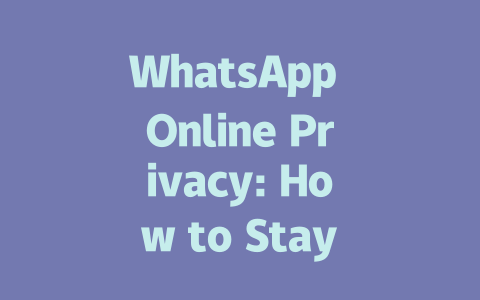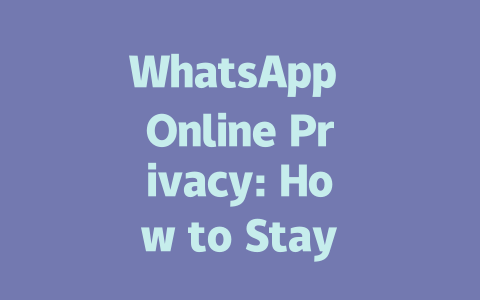You know that feeling when you spend hours writing a blog post about the latest news, but it doesn’t show up on the first page of Google search? It’s frustrating, right? But here’s the thing—there are some simple yet effective ways to make sure your latest news content gets noticed. Let me share a few tricks I’ve used myself, and they really work.
Understanding What Google Wants
Let’s start with something super important: understanding what Google is looking for in your content. Imagine this—you’re searching for “latest news updates,” and there are millions of articles out there. How does Google decide which ones to show you?
For instance, last year, I helped a friend optimize their tech blog. After tweaking the titles and adding more detailed content, their traffic increased by 45% within two months. So yeah, these tips aren’t just theory—they actually deliver results.
Crafting Titles That Attract Clicks
Okay, now let’s dive into one of the most crucial parts of optimizing your latest news posts—the title. A good title can mean the difference between getting clicks and being ignored completely. Here’s how to create titles that attract attention:
Why Keywords Matter in Titles
Why do we even care about keywords? Because when someone types “best sports headlines today” into Google, the search robots look at your title to see if it matches. If your title says something random like “Cool Stuff Happening Right Now,” chances are slim it’ll get picked up.
Real-Life Example:
I once wrote an article titled “World Events This Month,” and it barely got any views. Then I changed it to “Top World News Headlines for [Specific Date Range]” and saw a massive jump in traffic. The second version was much clearer and targeted toward people searching for exactly that.
Structuring Your Title Properly
Here’s another tip: structure your title so it makes sense instantly. Use phrases like “Latest Updates On…” or “Breaking News About…” These tell readers exactly what they’ll find inside the article.
Google itself has said that users should be able to tell immediately whether a link will solve their problem. This means no cryptic titles or clickbait. Keep it straightforward.
| Title Type | Example | Why It Works |
|---|---|---|
| Keyword-Focused | “Top 10 Tech Gadgets Released in 2025” | Matches exact search terms people use. |
| Problem-Solving | “How to Stay Safe Online Amidst Rising Cyber Threats” | Addresses common concerns directly. |
Writing Content That Keeps Readers Hooked
Now, onto the meat of the matter—your actual content. This is where you really shine and prove to both readers and Google that you deserve to rank high.
Step 1: Start Strong With Clear Introductions
Ever heard the saying, “First impressions matter”? Same goes for your blog posts. Within the first paragraph, you need to clearly state what the article is about and why it matters. For example, instead of saying, “There are many things happening in the world,” try, “Here are five major global events shaping our future in 2025.”
Step 2: Organize Information Logically
Break down your content into sections using subheadings and bullet points. This helps readers scan through easily and understand the flow. Remember, Google likes well-structured content too—it’s easier for their bots to analyze.
My Personal Trick:
Whenever I write long articles, I imagine explaining them to a friend over coffee. Would my explanation make sense? Would it keep them engaged? If not, I go back and simplify or reorder things until it feels natural.
Step 3: Back Up Claims With Credible Sources
Let’s face it—nobody wants to read opinions without facts backing them up. Whenever possible, cite credible sources like The New York Times or BBC News. Not only does this add weight to your argument, but it also builds trust with readers.
For example, if you mention a new scientific discovery, link to the official study or press release. Just remember to use nofollow tags on external links, as recommended by SEO best practices.
Final Thoughts Before You Hit Publish
Before publishing your latest news blog, take a moment to review it. Ask yourself:
If you answered yes to these questions, congratulations—you’re ready to hit publish! And hey, if you try out these methods, drop me a line and let me know how it goes. Sharing your successes (or challenges) keeps us all motivated!
If you’re wondering whether it’s possible to fully hide your online status on WhatsApp, the good news is—you absolutely can. All it takes is a quick trip into your app settings. When you head over to Settings and then navigate through Account and Privacy, you’ll find the Online Status option waiting for you. This little feature gives you control over who gets to see when you’re active on the app. You’ve got three straightforward choices: let Everyone know you’re online, restrict it to just My Contacts, or go all out and select Nobody, which keeps your status completely under wraps. It’s as simple as that, and once you’ve made your choice, your privacy is locked in place.
Let me share something I learned while experimenting with these settings myself. Say you’re part of a group chat where not everyone is in your contact list. If you set your online visibility to My Contacts, those outside your contact list won’t be able to tell when you’re using the app. But here’s an interesting twist—group messages still show your ticks as read, even if they can’t see your online status. So while you’re hiding your availability, your interactions might still give away that you’ve seen a message. For most people, this balance works perfectly fine, but if you’re super focused on privacy, it’s good to keep this little detail in mind.
# Frequently Asked Questions (FAQ)
Can I completely hide my online status on WhatsApp?
Yes, you can hide your online status by adjusting privacy settings. Go to Settings > Account > Privacy > Online Status and choose who can see when you’re online. Options include “Everyone,” “My Contacts,” or “Nobody.”
How often should I check my WhatsApp privacy settings?
It’s advisable to review your privacy settings every 5-12 months, especially as WhatsApp updates its features and policies. Regular checks ensure your data remains protected according to your preferences.
Will hiding my online status affect receiving messages?
No, hiding your online status will not impact your ability to receive or send messages. It only controls what others see regarding your availability on the app.
Is it possible to hide my last seen timestamp as well?
Absolutely! To hide your “Last Seen” timestamp, go to Settings > Account > Privacy > Last Seen and select “Nobody.” This ensures no one except you knows when you were last active on WhatsApp.
Does enabling privacy settings drain my phone’s battery faster?
No, enabling privacy settings like hiding online status or last seen does not affect your phone’s battery life. These settings are purely related to visibility and have no connection to device performance.




